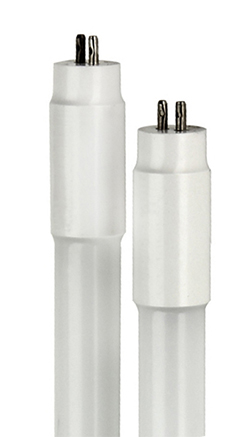
For many business, indoor lighting is one of the most important decisions to be made. Equally important, however, should be how the outside is illuminated. For potential customers passing the building at night, or walking through the parking garage, the outside will be their first impression of your establishment. While HID lamps have been the standard outdoor lighting option for years, LED canopy light fixtures help provide many options to create a safe and inviting environment while greatly reducing both energy use and lighting costs.
Light Distribution
LED manufacturers made sure to provide many options to address a myriad of commercial lighting needs. The LED fixtures are available in two different types: Parking Garage Distribution and Canopy Distribution. The lamps also come in different shapes (round and square) to make the switch simple. The shapes allow multiple choices for mounting: ceiling, arm, and wall mount to name a few. HID lamps generally emit a somewhat orange light color. Their LED counterparts however, provide a cool white light. This gives them a much brighter appearance, and helps foster feelings of safety and comfort where installed.
Switching and Saving
Regardless of where the new lights are being installed, you’ll want to make sure the old ones are being properly replaced. LED canopy light fixtures are available in 20 to 53 watt options as replacements for the following HID lights:
- 20W LED – 100W Metal Halide
- 30W LED – 150W Metal Halide
- 40W LED – 175W Metal Halide
- 53W LED – 250W Metal Halide
The LED technology allows these lamps to use such low amounts of energy while still maintaining brightness. This is because the brightness is not dependent on wattage, but lumens. The higher the lumen count on a lamp is, the brighter the light emitted from will be. Further opportunities for savings are realized through dimmable and motion sensing lamps. By installing the LED canopy light fixtures, you’ll be cutting energy usage per fixture by up to 80% and as a result, energy costs.

 Traditionally, fluorescent T8 linear lamps have been used as the main light source in commercial buildings such as hospitals, warehouses, schools, and more. LED T8 lamps are quickly replacing their fluorescent counterparts. The LED technology provides higher efficiency, many color and lumen options, and sizes. Advancements in lighting capabilities have also led to more options for installation. When deciding on which lamps to replace your fluorescent T8s with, one of the main things to consider is the ballast type. Knowing the difference between a
Traditionally, fluorescent T8 linear lamps have been used as the main light source in commercial buildings such as hospitals, warehouses, schools, and more. LED T8 lamps are quickly replacing their fluorescent counterparts. The LED technology provides higher efficiency, many color and lumen options, and sizes. Advancements in lighting capabilities have also led to more options for installation. When deciding on which lamps to replace your fluorescent T8s with, one of the main things to consider is the ballast type. Knowing the difference between a  In commercial and industrial buildings, High Intensity Discharge, or HID, light fixtures are commonly found. These are high voltage fixtures that use a mix of metals and gases to create a bright and powerful white light. With each year, and as technology continues to advance, there are far more options for lighting than ever before. Among the most energy efficient options for illuminating any space are LEDs. Naturally, the larger the space, the greater the opportunity for savings. Making the switch from an HID light fixture to a
In commercial and industrial buildings, High Intensity Discharge, or HID, light fixtures are commonly found. These are high voltage fixtures that use a mix of metals and gases to create a bright and powerful white light. With each year, and as technology continues to advance, there are far more options for lighting than ever before. Among the most energy efficient options for illuminating any space are LEDs. Naturally, the larger the space, the greater the opportunity for savings. Making the switch from an HID light fixture to a 
 faster than the standard
faster than the standard 


